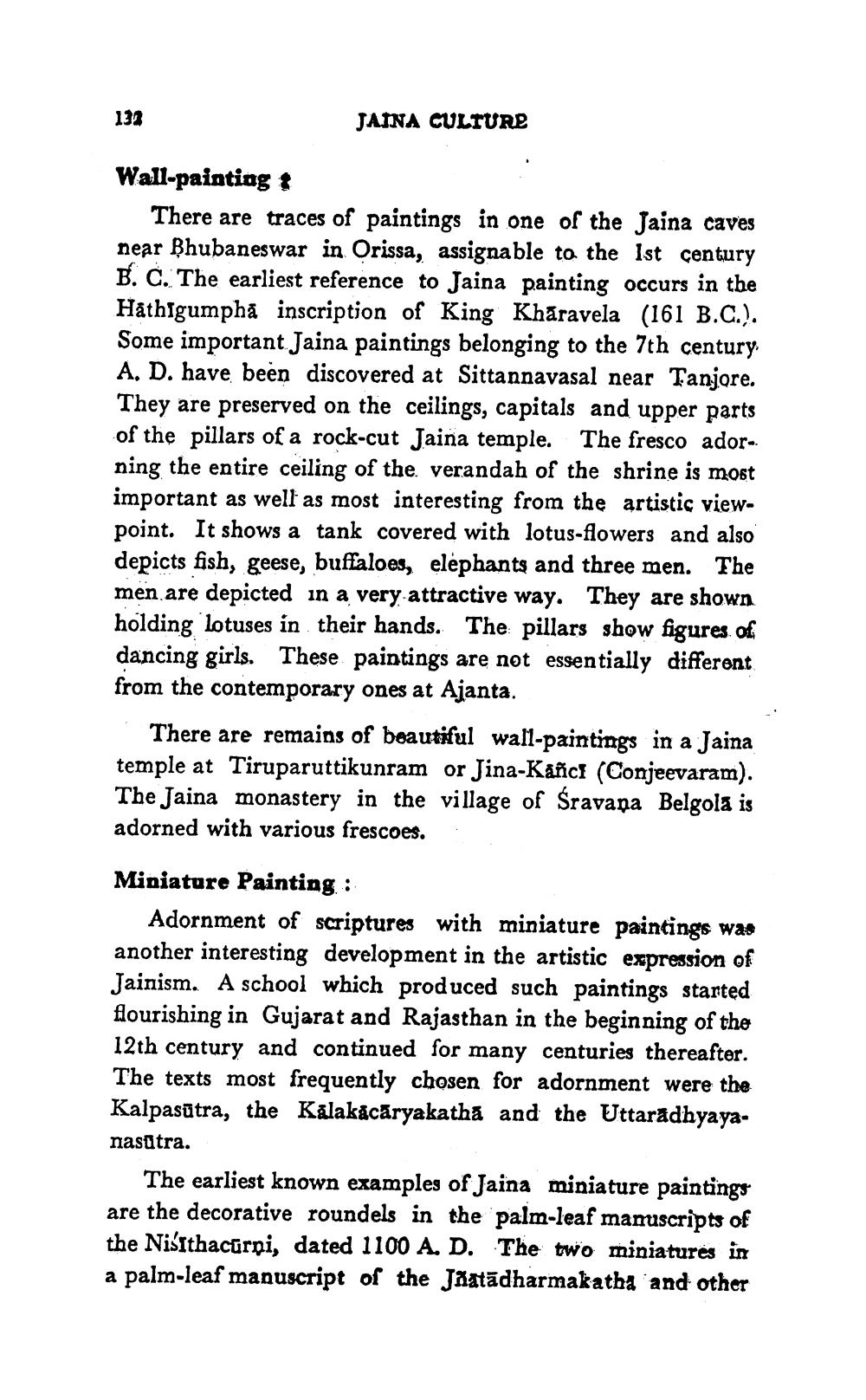________________
132
JAINA CULTURE
Wall-painting &
There are traces of paintings in one of the Jaina caves near Bhubaneswar in Orissa, assignable to the 1st century B. C. The earliest reference to Jaina painting occurs in the Håthigumpha inscription of King Khāravela (161 B.C.). Some important Jaina paintings belonging to the 7th century. A. D. have been discovered at Sittannavasal near Tanjore. They are preserved on the ceilings, capitals and upper parts of the pillars of a rock-cut Jaina temple. The fresco ador-. ning the entire ceiling of the verandah of the shrine is most important as well as most interesting from the artistic viewpoint. It shows a tank covered with lotus-flowers and also depicts fish, geese, buffaloes, elephants and three men. The men are depicted in a very attractive way. They are shown holding lotuses in their hands. The pillars show figures of dancing girls. These paintings are not essentially different from the contemporary ones at Ajanta.
There are remains of beautiful wall-paintings in a Jaina temple at Tiruparuttikunram or Jina-Kanci (Conjeevaram). The Jaina monastery in the village of Śravana Belgola is adorned with various frescoes..
Miniature Painting ::
Adornment of scriptures with miniature paintings w29 another interesting development in the artistic expression of Jainism. A school which produced such paintings started flourishing in Gujarat and Rajasthan in the beginning of the 12th century and continued for many centuries thereafter. The texts most frequently chosen for adornment were the Kalpasūtra, the Kalakácāryakatha and the Uttaradhyayanasätra.
The earliest known examples of Jaina miniature paintings are the decorative roundels in the palm-leaf manuscripts of the Nisíthacarpi, dated 1100 A. D. The two miniatures in a palm-leaf manuscript of the Jaatādharmakatha and other




